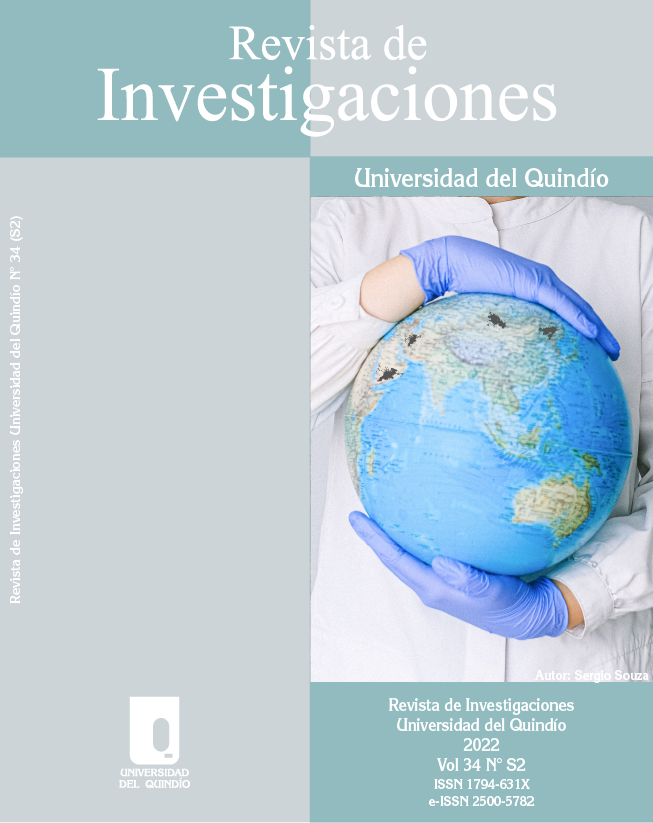Una revisión de la filosofía de la estética y el arte a partir de consideraciones teóricas y metodológicas
DOI:
https://doi.org/10.33975/riuq.vol34nS2.1141Palabras clave:
Belleza, experiencia estética, proceso de percepción, cerebroResumen
Científicos y neurocientíficos han llevado a cabo recientemente investigaciones científicas y neurológicas para descubrir qué hay detrás de la belleza y el poder de las obras de arte para transmitir su significado a su público. Los filósofos han estudiado las cajas negras durante años y los investigadores se han adentrado en ellas últimamente. En este sentido, el presente estudio se realizó para investigar el impacto de la belleza frente a obras de arte familiares y no familiares. La estética es uno de los factores más importantes y controvertidos en la historia del arte y su influencia no puede ser ignorada. Para ello se discutieron diversas metodologías del proceso mental en presencia del arte y la estética. El presente artículo ha intentado dar seguimiento al origen de la belleza en el perceptor a través de la mirada en un fenómeno bello y adoptando tres perspectivas biológica, cognitiva y psicológica y lograr una visión relativamente integral de la belleza y su lugar en el proceso de percepción humana. . En base a esto, el placer estético no se limita sólo al sentido de la vista y la apariencia externa de la ciudad, sino que es el resultado del efecto de todos los propósitos del diseño en los sentidos humanos.
Descargas
Citas
Albers, S., & Caeners, T. (2009). The Poetics and Aesthetics of Ian McEwan's Atonement. English Studies, 90(6), 707-720.
Baars, B. J., & Gage, N. M. (2010). Cognition, brain, and consciousness: Introduction to cognitive neuroscience. Academic Press.
Brook, A., & Mandik, P. (2007). The philosophy and neuroscience movement. Analyse & Kritik, 29(1), 3-23.
Dehaene, S., & Cohen, L. (1997). Cerebral pathways for calculation: Double dissociation between rote verbal and quantitative knowledge of arithmetic. Cortex, 33(2), 219-250.
Elkins, J. (2005). Pictures and tears: A history of people who have cried in front of paintings: Abingdon, United Kingdom: Routledge.
Krafnick, A. J., Tan, L. H., Flowers, D. L., Luetje, M. M., Napoliello, E. M., Siok, W. T., ... & Eden, G. F. (2016). Chinese character and English word processing in children's ventral occipitotemporal cortex: fMRI evidence for script invariance. Neuroimage, 133, 302-312.
Larsen, S. (2006). The healing power of neurofeedback: The revolutionary LENS technique for restoring optimal brain function. Simon and Schuster.
Lu, X., Lin, Z., Shen, X., Mech, R., & Wang, J. Z. (2015). Deep multi-patch aggregation network for image style, aesthetics, and quality estimation. In Proceedings of the IEEE international conference on computer vision (pp. 990-998).
Marculescu, C. (2011). Postmodern transformations of art and authorship. University of Bucharest Review. Literary and Cultural Studies Series, (01), 83-92.
Merdifa, R. (2018). The Main Character’s Loss, Emptiness and Object of Desire in Markus Zusak’s The Book Thief. Vivid: Journal of Language and Literature, 7(2), 63-70.
Richardson, J. R., Roy, A., Shalat, S. L., Von Stein, R. T., Hossain, M. M., Buckley, B., ... & German, D. C. (2014). Elevated serum pesticide levels and risk for Alzheimer disease. JAMA neurology, 71(3), 284-290.
Scranton, P. (Ed.). (2001). Beauty and business: commerce, gender, and culture in modern America. Psychology Press.
Solnais, C., Andreu-Perez, J., Sánchez-Fernández, J., & Andréu-Abela, J. (2013). The contribution of neuroscience to consumer research: A conceptual framework and empirical review. Journal of economic psychology, 36, 68-81.
Tolstoy, L. (1995). What is art?. UK: Penguin Books.
Searle, D. A. (2021). An armistice without peace? The'failed'Versailles settlement in Europe, 1919-1923. Historisches Jahrbuch.
Vecchiato, G., Babiloni, F., Astolfi, L., Toppi, J., Cherubino, P., Dai, J., ... & Wei, D. (2011, October). Enhance of theta EEG spectral activity related to the memorization of commercial advertisings in Chinese and Italian subjects. In 2011 4th International Conference on Biomedical Engineering and Informatics (BMEI) (Vol. 3, pp. 1491-1494). IEEE.
Yang, T., Formuli, A., Paolini, M., & Zeki, S. (2022). The neural determinants of beauty. European Journal of Neuroscience, 55(1), 91-106.
Yarova, A. (2016). Haunted by humans: Inverting the reality of the holocaust in Markus Zusak's' The book thief'. Papers: Explorations into Children's Literature, 24(1), 54-81.
Zeki, S., & Ishizu, T. (2013). The “Visual Shock” of Francis Bacon: an essay in neuroesthetics. Frontiers in human neuroscience, 7, 850.
Descargas
Publicado
Cómo citar
Número
Sección
Licencia
Derechos de autor 2022 Revista de Investigaciones Universidad del Quindío

Esta obra está bajo una licencia internacional Creative Commons Atribución-NoComercial-SinDerivadas 4.0.


